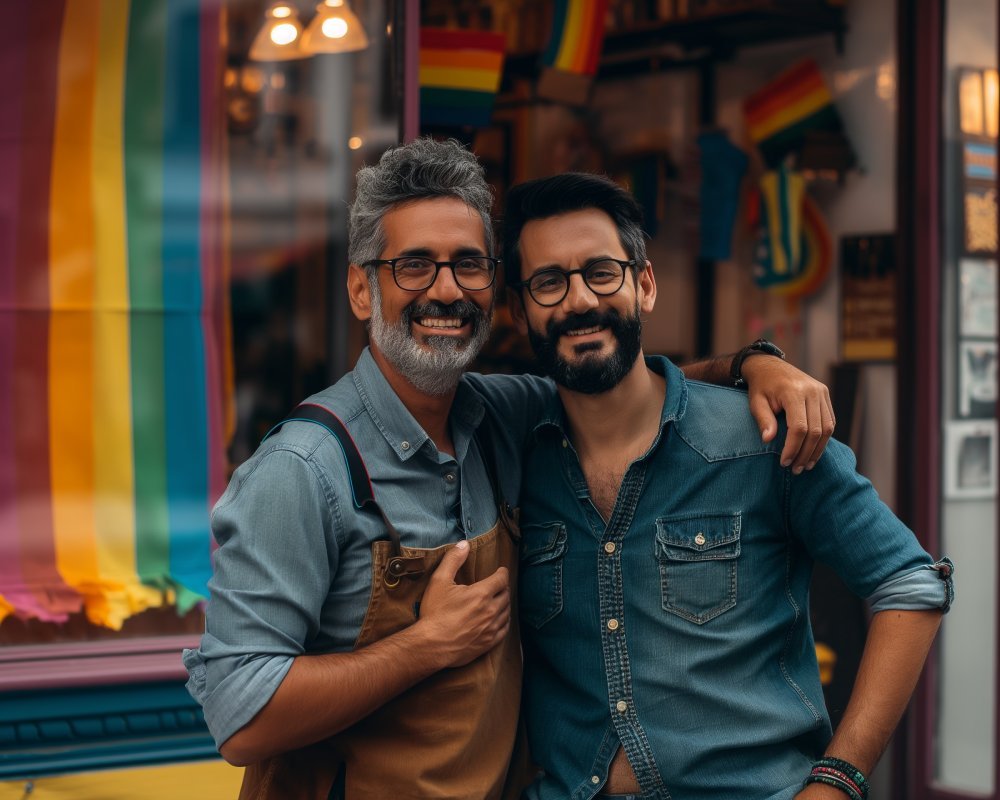
What Is Gay Love? A Comprehensive Exploration of Love, Romance, and Relationships in the LGBTQ+ Community
Table of Contents
- Introduction
1.1. Defining Gay Love and Its Significance
1.2. The Spectrum of Love in LGBTQ+ Communities
1.3. Purpose and Overview of the Blog - Historical Perspectives on Gay Love
2.1. Gay Love in Ancient and Medieval Times
2.2. The Impact of Repression and Censorship
2.3. Milestones in Gay Love and Civil Rights
2.4. Changing Narratives Through Art and Media - What Is Gay Love? Understanding the Heart of Same-Sex Relationships
3.1. Defining Gay Love: More Than a Sexual Orientation
3.2. Emotional Depth, Passion, and Connection
3.3. Love Beyond Labels: Gay, Lesbian, Transgender, and Queer Love - How Is Gay Romance Different from Straight Romance?
4.1. Challenging Traditional Romance Narratives
4.2. Unique Social, Legal, and Cultural Challenges
4.3. Communication and Emotional Expression in Same-Sex Relationships
4.4. Table A: Comparative Analysis of Gay and Straight Romance - Expressing Love in Same-Sex Relationships
5.1. Cultural Rituals and Traditions
5.2. Coming Out, Public Affection, and Emotional Intimacy
5.3. Celebrating Diversity in Love: From Drag to Ballroom
5.4. Table B: Forms of Expressing Love in LGBTQ+ Communities - What Gay Men Should Expect in a Relationship
6.1. Building Trust and Communication
6.2. Navigating Identity and Stereotypes
6.3. Balancing Independence and Partnership
6.4. True Gay Love Stories: Lessons from Real Couples 6.5. Table C: 10 Ways Gay Men’s Relationships Differ From Straight Relationships - Exploring Lesbian Love
7.1. Unique Aspects of Lesbian Romance
7.2. Celebrating Femme and Butch Dynamics
7.3. Love Stories That Inspire: From Indie Films to Real Life
7.4. Table D: Comparing Lesbian Love and Gay Love - Transgender Love and Queer Love
8.1. Understanding Transgender Love: Identity, Transition, and Romance
8.2. The Nuances of Queer Love: Beyond Binary Notions
8.3. Challenges and Triumphs in Trans and Queer Relationships
8.4. Table E: How Transgender Love Differs From Other Forms of Gay Love - True Gay Love Stories: Inspiration from Real Life
9.1. Historical Love Stories that Changed Perceptions
9.2. Modern Narratives of Commitment and Resilience
9.3. Lessons Learned and Future Hopes
9.4. Voices from the Community: Interviews and Testimonials - Navigating Challenges in Gay Love
10.1. Legal and Social Barriers
10.2. Dealing with Family, Friends, and Society’s Expectations
10.3. Coping with Internalized Homophobia and Self-Acceptance
10.4. Strategies for Conflict Resolution and Growth - The Future of Gay Love: Trends and Hopes
11.1. The Impact of Marriage Equality and Legal Protections
11.2. Technology, Dating Apps, and New Modes of Connection
11.3. Shifting Cultural Narratives: Art, Media, and Beyond
11.4. Building a World of Inclusive Love - Conclusion
12.1. Recap of Key Themes and Insights
12.2. A Call to Celebrate Authentic Love
12.3. Final Thoughts and Next Steps for Readers
1. Introduction – What Is Gay Love?
1.1. Defining Gay Love and Its Significance
Gay love is much more than a simple orientation—it’s a rich tapestry of emotional depth, cultural complexity, and personal truth. At its core, What Is Gay Love? explores the ways in which same-sex relationships convey universal feelings of passion, intimacy, commitment, and companionship while also facing unique challenges. Unlike conventional narratives, gay love often emerges from a journey of self-discovery, defiance of societal norms, and the pursuit of authenticity.
In today’s world, where LGBTQ+ rights and representation are gaining more traction than ever before, understanding gay love becomes imperative not only for members of the community but also for allies and society at large. Love—whether gay, lesbian, transgender, or queer—is a powerful agent of change and acceptance. It challenges stereotypes, breaks barriers, and inspires us to reimagine what relationships and families can look like.
1.2. The Spectrum of Love in LGBTQ+ Communities
While we explore gay love specifically, this blog also touches on related themes such as Lesbian Love, Transgender Love, and Queer Love. These elements together create a mosaic of diverse relational dynamics that defy narrow definitions. For some, love means the public celebration of intimacy; for others, it is a quiet, internal strength that withstands external prejudice. Each experience is valid, reflecting the myriad ways love manifests in our lives.
1.3. Purpose and Overview of the Blog
This long-form blog is designed to delve deeply into all facets of gay love. We will look into its historical background, explore how gay romance differs from straight romance, discuss expectations in relationships, and even compare expressions of love across different LGBTQ+ groups. With tables that compare similarities and differences, and with stories and testimonials, you’ll gain a nuanced understanding of what gay love truly means.
Whether you are a gay individual seeking affirmation, a queer person exploring diverse expressions of intimacy, or an ally eager to learn, our goal is to provide accurate, science-backed, and heartfelt insights. Let’s embark on a journey through the evolution, celebration, and future of gay love.

2. Historical Perspectives on Gay Love
2.1. Gay Love in Ancient and Medieval Times
Long before modern labels emerged, same-sex love was evident in various historical cultures. In ancient Greece, for example, relationships between men were not only common but often celebrated as a model of mentorship and mutual admiration. These relationships, documented in art and literature, laid early foundations of what we might now describe as gay love.
In medieval societies, however, the picture became more complex. Christianity, which came to dominate much of Europe, condemned sexual activity outside heterosexual marriage. Despite this, covert expressions of same-sex affection persisted in secret societies, hidden love letters, and coded symbols. These early manifestations underscore that gay love has always existed, even when public expression was dangerous or forbidden.
2.2. The Impact of Repression and Censorship
For centuries, Western society labeled same-sex attractions as sinful or abnormal. This repression meant that gay love was relegated to secret meetings, underground literature, and coded cultural expressions. Despite harsh restrictions and legal dangers, many individuals continued to love and form relationships that—while hidden—were full of passion and authenticity.
Repressive eras often left a mark on gay cultural memory. Hidden relationships became a symbol of resilience, and forbidden love fostered an intense sense of connection. The literature of Oscar Wilde and the clandestine narratives of gay activists in the early 20th century highlight the profound impact that repression can have on shaping and intensifying love between same-sex partners.
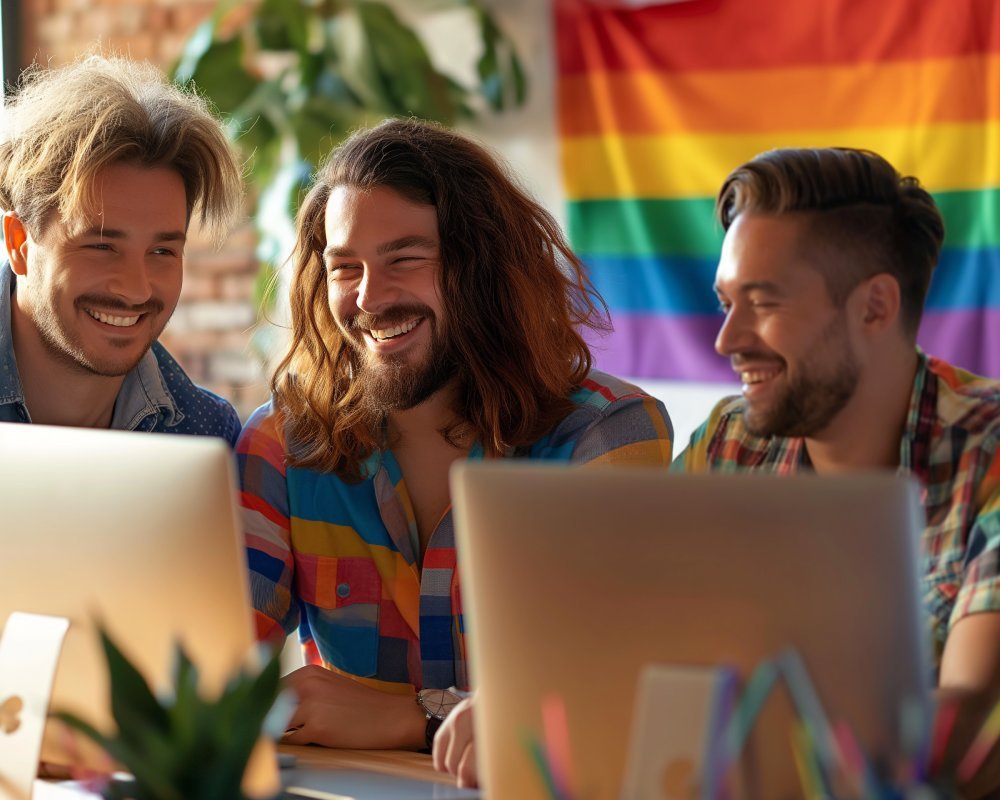
2.3. Milestones in Gay Love and Civil Rights
The modern era saw dramatic shifts in the public acknowledgment of gay love. From the Stonewall Riots of 1969, which galvanized the gay liberation movement, to the gradual legalization of same-sex marriage in many Western nations, milestones in civil rights have redefined gay love as both a private and public expression. Pioneering figures such as Harvey Milk not only fought for rights but also celebrated the right to love openly.
As legal barriers fell, gay love began to appear in popular media in more authentic ways. Television shows, films, and literature started to depict gay relationships as complex and real. These cultural milestones helped foster a broader social acceptance of gay love, paving the way for the rich, diverse romantic narratives we see today.
2.4. Changing Narratives Through Art and Media
The struggle and eventual celebration of gay love have been powerfully captured by artists. From the AIDS activism of the 1980s and 1990s to contemporary works that explore LGBTQ+ family and intimacy, art has served as a vehicle to express both the pain of repression and the joy of liberation. Iconic films, documentaries, and stage productions have chronicled stories of gay love, providing visibility and fostering understanding among diverse audiences.
The historical evolution of gay love reveals a continuous cycle of repression, resistance, and eventual acceptance. Understanding this timeline sets the foundation for our later discussions on what gay love means today and how it differs from more traditional romance.
Recommended
3. What Is Gay Love? Understanding the Heart of Same-Sex Relationships
3.1. Defining Gay Love: More Than a Sexual Orientation
At its simplest, gay love refers to the romantic and sexual relationships shared between men who are attracted to men. Yet, it is much more than a sexual preference. It encapsulates the emotional connection, shared experiences, and unique cultural aspects that emerge from historical adversity. Gay love is often a story of resilience—love forged under pressure and, in many cases, against great adversity.
3.2. Emotional Depth, Passion, and Connection
Gay love embodies the universal human need for connection. Like any other form of love, it is built on compassion, trust, and mutual respect. At the same time, gay love has often had to flourish in spite of external pressures such as societal rejection or legal discrimination. This double burden can intensify the emotional bonds between partners, who often rely on each other for not just love but also survival in a world that has not always been kind.
Many individuals in gay relationships describe their love as transformative—a powerful force that enables them to overcome lifelong challenges. The notion of “true love” is celebrated in gay communities with the same fervor as it is in straight relationships, though often with added layers of defiance and liberation.
3.3. Love Beyond Labels: Gay, Lesbian, Transgender, and Queer Love
While this blog focuses on gay love, it is important to understand that love among LGBTQ+ people is diverse.
- Gay Love centers on the relationships between men, rich with unique cultural symbols and shared histories.
- Lesbian Love carries its own narratives, from the dynamics of butch/femme relationships to the complexities of woman-to-woman intimacy.
- Transgender Love challenges traditional gender norms, as trans individuals navigate identity, transition, and affection in ways often misunderstood by mainstream society.
- Queer Love is an umbrella term that celebrates flexibility in romantic attachment and defies rigid categories.
By examining all these expressions, we see that love—whether gay or queer—is a multifaceted, universal experience that both unites us and highlights our unique journeys. In the following chapters, we will focus on various dimensions of gay love while also drawing comparisons with related relationships and exploring what sets gay romance apart from its straight counterpart.

4. How Is Gay Romance Different from Straight Romance?
4.1. Challenging Traditional Romance Narratives
When we ask, “How is gay romance different from straight romance?” it’s crucial to note that many core aspects of love are universal. All couples—regardless of gender—experience passion, vulnerability, and the challenges of building a life together. However, gay romance frequently intersects with unique external stressors that shape its character.
Traditional romance narratives in mainstream media have long been based on heterosexual ideals: a man and a woman meeting through chance, falling in love, and overcoming obstacles to their union. Gay romance, on the other hand, must contend with a history of exclusion, legal inequality, and cultural stigmatization. As a result, many gay love stories emphasize the triumph of overcoming adversity. They often highlight themes such as secrecy, defiance, and the joy of finally claiming a public identity.
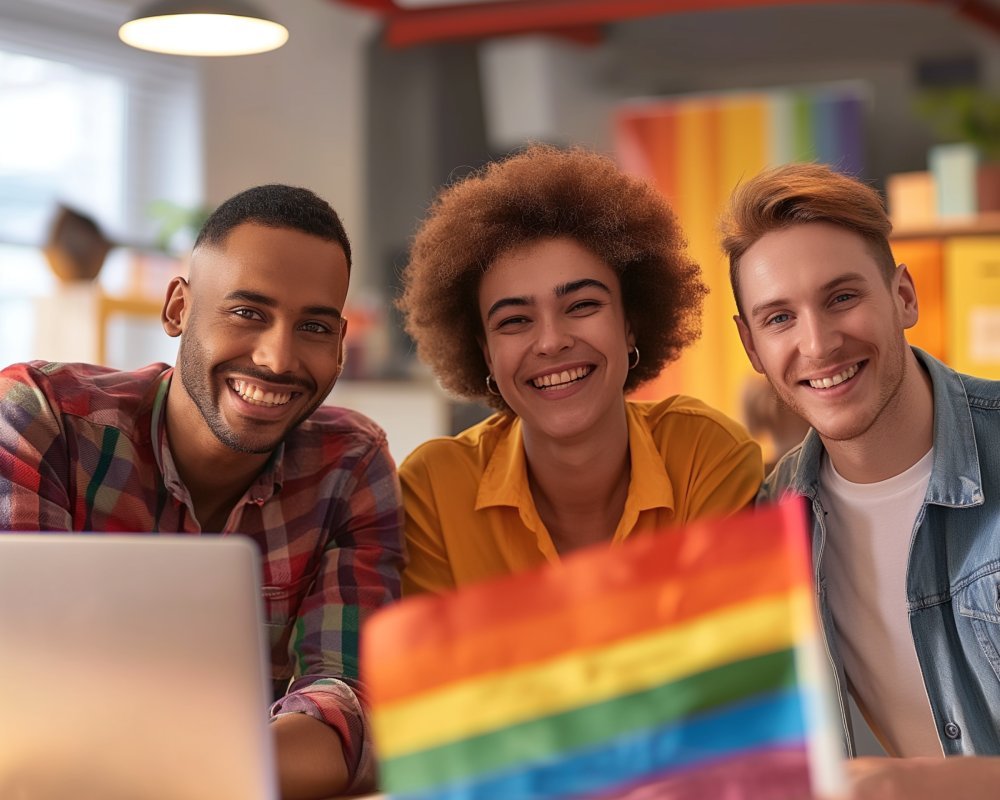
4.2. Unique Social, Legal, and Cultural Challenges
Gay couples often experience challenges that straight couples rarely face:
- Legal Barriers: In many parts of the world, legal recognition of same-sex partnerships is still a battle. Even in countries where marriage equality is legislated, gay couples may face discrimination in areas like housing, healthcare, or parental rights.
- Family Acceptance: Reactions from families and friends can range from supportive to hostile. The process of coming out is not always liberating for everyone—in some cases, it can lead to estrangement or rejection.
- Social Visibility: Gay couples frequently have to navigate public displays of affection with caution, as acceptance levels vary widely. This reality influences how they express their love in public.
4.3. Communication and Emotional Expression in Same-Sex Relationships
Many gay couples report that open communication and vulnerability form the backbone of their relationships. Having navigated societal marginalization, they often develop deep emotional resilience and heightened sensitivity to their partner’s needs. The “gay love” dynamic frequently involves continuous negotiation of identity, power, and intimacy—all of which contribute to a relationship’s depth.
4.4. Table A: Comparative Analysis of Gay and Straight Romance
| Aspect | Gay Romance | Straight Romance |
|---|---|---|
| Historical Barriers | Confronts legal inequalities, societal stigma, and family rejection in many cases. | Generally accepted socially; though individual cases vary, systemic barriers are fewer. |
| Public Displays of Affection | May require caution in less accepting environments. | Often normalized and celebrated in public contexts. |
| Communication Dynamics | Frequently marked by deep, explicit communication due to shared experiences of marginalization. | Varies widely; often follows traditional gendered communication patterns. |
| Cultural Narratives | Emphasizes overcoming adversity, identity discovery, and defiant self-expression. | Often framed within traditional narratives of romance and partnership without historical prejudice. |
| Legal Protections | Varies significantly by region; in many places still fighting for equality. | Generally protected under marriage and family laws. |
While both gay and straight romances share the same universal human desire for connection and belonging, the extra layers of social, legal, and cultural challenges significantly influence the dynamics and narratives in gay relationships.
5. Expressing Love in Same-Sex Relationships
5.1. Cultural Rituals and Traditions in Gay Love
Expressing love in same-sex relationships often involves creative reclamation of rituals that may have been traditionally designed for heterosexual couples. For example, many gay couples celebrate anniversaries or milestones in unique ways—be it through impromptu road trips, themed parties, or artistic collaborations. These rituals become a blend of traditional celebration and queer innovation, reflecting both shared human experiences and distinct cultural identities.
5.2. Public Affection and the Process of Coming Out
For many gay couples, public displays of affection (PDA) carry a dual significance. On one hand, they are expressions of natural intimacy. On the other, they serve as acts of resistance and affirmation in societies that still harbor prejudice. Coming out in public and embracing who you are in an environment that may not always be accepting can transform daily acts of love into powerful declarations of identity.
5.3. Table B: Forms of Expressing Love in LGBTQ+ Communities
| Form of Expression | Description | Significance in Gay Love |
|---|---|---|
| Public Affection | Holding hands, kissing, and embracing openly in public spaces. | Acts as a declaration of identity and defiance against oppression. |
| Ritual Celebrations | Unique ceremonies for relationship milestones (e.g., engagement parties, anniversaries, coming-out celebrations). | Reinforces commitment, honor, and cultural pride within LGBTQ+ communities. |
| Creative Expression | Art, music, and performance (e.g., drag shows, pride parades, collaborative art projects). | Provides an outlet for resilience and solidarity, blending personal emotion with communal expression. |
| Digital Connection | Social media, dating apps, and online forums where couples share stories and support each other. | Connects geographically dispersed communities and fosters global dialogue. |

5.4. Expressing Love Across Generations and Cultures
Different generations and cultures within the LGBTQ+ community may have varying ways of expressing love. Older gay couples might carry memories of clandestine relationships, using private symbols and subtle gestures, while younger generations might embrace bold, public celebrations. Similarly, cultural norms from various parts of the world can influence how love is expressed—whether through close-knit family gatherings, community festivals, or innovative online engagements.
The ways in which love is celebrated and expressed in gay relationships are a testament to the resilience and creativity of LGBTQ+ communities. In many cases, these forms of expression not only affirm love but also serve as tools for community building and political resistance.

Recommended
6. What Gay Men Should Expect in a Relationship
6.1. Building Trust and Communication
In any relationship, trust and communication are essential. For gay men, these components carry additional weight due to the historical background of societal rejection and internalized prejudice. Many gay men report that open, honest dialogue is critical for overcoming internal and external pressures.
- Expect to Communicate: Understand that vulnerability is not a weakness but a strength. Sharing personal experiences and expectations can build lasting trust.
- Expect to Grow Together: Every relationship has challenges. Gay men should expect to navigate conflicts with empathy and mutual respect while forging a stronger bond.
6.2. Navigating Identity and Stereotypes
Gay relationships often require partners to contend with persistent stereotypes and societal misconceptions.
- Discuss External Pressures: Partners should talk about how stereotypes—such as the “effeminate gay” or “promiscuous” labels—affect their self-esteem and relationship.
- Set Boundaries with the World: Learn to advocate for one another in face of discrimination from family, friends, or coworkers.
- Celebrate Individuality: Recognize that while stereotypes exist, each partner brings a unique personality, interests, and goals to the relationship.
6.3. Balancing Independence and Partnership
A common challenge in gay relationships, as in all relationships, is maintaining a balance between autonomy and togetherness.
- Expecting Self-Care: Encourage individuality while sharing a life together. Pursue personal passions and support each other’s personal growth.
- Shared Responsibilities: Create a partnership that divides responsibilities fairly—financial, emotional, or practical—based on mutual agreement.
- Flexibility: Understand that traditional gender roles may not apply; define roles and responsibilities together.
6.4. True Gay Love Stories: Lessons from Real Couples
Within the LGBTQ+ community, many couples have shared their journeys of love, triumph, and resilience. These true stories provide insight into:
- Overcoming Adversity: How couples navigated legal barriers and discrimination.
- Deep Emotional Bonds: The rewards of building trust and vulnerability in relationships.
- Growth and Evolution: How gay love can evolve over time while remaining an ever-present source of strength.
6.5. Table C: 10 Ways Gay Men’s Relationships Differ From Straight Relationships
| Aspect | Gay Men’s Relationships | Straight Relationships |
|---|---|---|
| Legal Recognition History | Often faced legal uncertainty; now evolving with marriage equality but still facing regional disparities. | Long established legal rights, though still evolving on gender equality issues. |
| Public Display of Affection | May require greater caution in unsupportive environments; acts as both intimacy and activism. | Generally normalized in most cultures, with fewer public restrictions. |
| Communication Styles | Frequently marked by open, direct communication as a response to historical marginalization. | Varies widely, sometimes influenced by traditional gender roles; communication norms differ by culture and upbringing. |
| Relationship Dynamics | Often formed in communities with a shared experience of discrimination, leading to deep emotional bonds. | Can be influenced by pre-defined roles and societal expectations, with varying levels of emotional transparency. |
| Social Support and Visibility | Historically built strong underground networks that fostered resilience; increasing visibility now shapes norms. | Supported by traditional family structures and societal norms that reinforce gender roles. |
By preparing gay men (and other LGBTQ+ people) for what to expect in their relationships, we empower them to build healthy, resilient partnerships that overcome societal challenges.
7. Exploring Lesbian Love
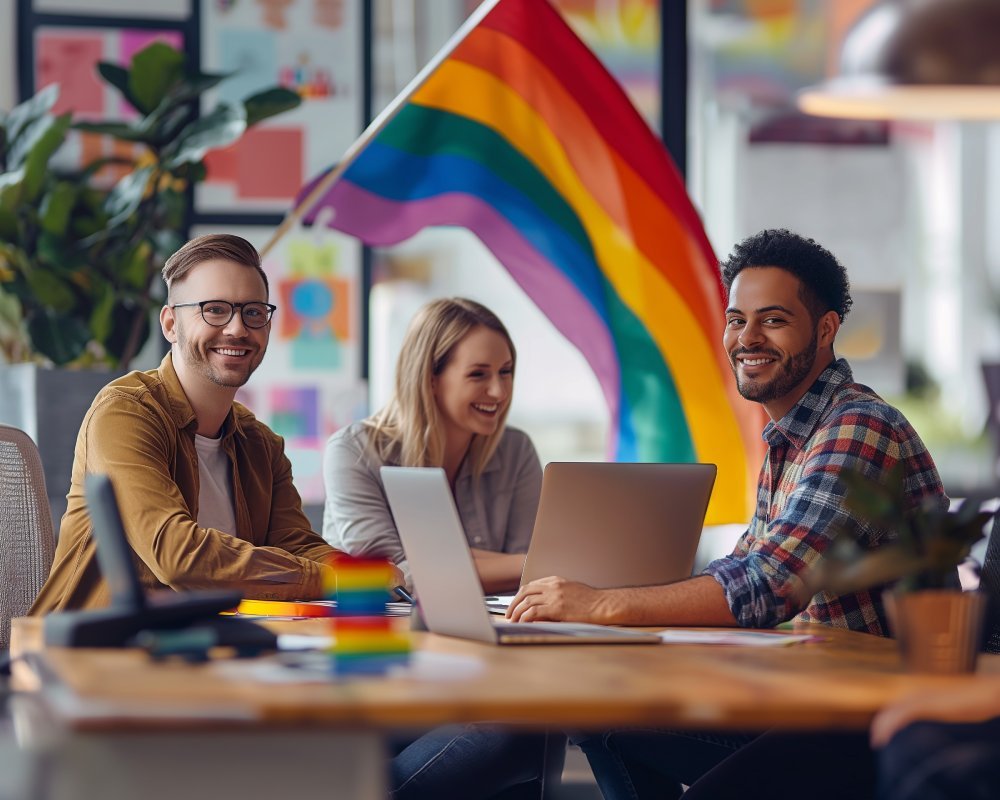
7.1. Unique Aspects of Lesbian Romance
Lesbian love is a multifaceted phenomenon characterized by intimacy that may blend deep emotional connection with varying expressions of gender.
- Dual Narratives: Lesbian relationships often oscillate between adopting cultural labels like butch or femme while simultaneously forging new identities that reflect their personal truth.
- Cultural Resilience: Due to historical invisibility, lesbians have developed distinct cultural expressions of love—through literature, art, and activism—that challenge mainstream definitions of romance.
7.2. Celebrating Femme and Butch Dynamics
Many lesbian couples embrace the butch/femme dichotomy as a celebration of diversity and a historical coping mechanism in the face of heteronormative pressure.
- Butch/Femme Fluidity: While some couples fit these categories, many move beyond them, creating relationships based on mutual respect rather than fixed roles.
- Media Representations: Popular shows and films have begun to explore these dimensions, though often through a limited lens. The reality, however, is far more nuanced, with each relationship charting its own course.
7.3. Love Stories That Inspire: From Indie Films to Real Life
Countless true stories of lesbian love inspire communities and individuals alike. These stories often emphasize themes of perseverance, mutual care, and the power of shared identity in overcoming adversity. Personal narratives and documentaries provide a window into how lesbians, despite societal challenges, build families, careers, and communities rooted in authentic love.
7.4. Table D: Comparing Lesbian Love and Gay Love
| Aspect | Lesbian Love | Gay Love (Gay Men’s Relationships) |
|---|---|---|
| Historical Context | Often shaped by both feminist and LGBTQ+ movements; familiar with gender dynamics in unique ways. | Rooted in both underground resistance and public activism, with a distinct focus on male identity and expression. |
| Relationship Dynamics | May focus on balancing traditional femininity with empowerment; diverse in approach to intimacy. | Frequently emphasizes overcoming external stigmas; built on networks formed from shared experiences of marginalization. |
| Cultural Representation | Frequently portrayed in media with a focus on dualities (butch vs. femme), which can be both celebrated and critiqued. | Often portrayed through humor and flamboyance, sometimes oversimplifying the complexities of personality. |
| Community and Identity | Faces unique erasure and stereotyping from both mainstream media and some within the LGBTQ+ community. | Works to counter the myth of promiscuity and fleeting commitment while celebrating resilience. |
By comparing lesbian love to gay love, we emphasize the many shades of intimacy and connection that exist within the LGBTQ+ community while showing that, regardless of specific dynamics, love always remains a transformative, human experience.

8. Transgender Love and Queer Love
8.1. Understanding Transgender Love: Identity, Transition, and Romance
Transgender love involves the deep personal journey of aligning one’s internal sense of gender with outward expressions of affection. Trans individuals may face unique challenges—from medical transitions to social skepticism—yet they also build relationships marked by profound vulnerability and resilience.
- Navigating Transition: Love stories within transgender relationships can include phases of coming out, changing bodies, or reinterpreting past relationships.
- Support and Empowerment: Partners often become advocates for one another, forming relationships that double as mutual support systems in the face of societal challenges.
8.2. Queer Love: Beyond Binary and Into Fluidity
The term queer love encapsulates relationships that defy traditional labels—embracing fluidity in both sexual orientation and gender identity.
- Ambiguity as Strength: Queer love is celebrated for its refusal to conform to binary definitions of “man” or “woman,” allowing for creative, multidimensional expressions of intimacy.
- Non-Monogamy and Open Relationships: Some queer communities experiment with relationship models that challenge conventional monogamous structures, opening up conversations about ethical non-monogamy and emotional plurality.

8.3. Challenges and Triumphs in Trans and Queer Relationships
Although transgender and queer relationships face many of the same external pressures as other LGBTQ+ relationships, they sometimes grapple with additional layers of erasure or misunderstanding in mainstream culture.
- Visibility and Representation: Media portrayals often either sensationalize or ignore these love stories.
- Internal Community Dynamics: Queer couples may face friction when defining relationship terms for themselves, especially when traditional language does not capture their reality.
8.4. Table E: How Transgender Love Differs From Other Forms of Gay Love
| Aspect | Transgender Love | Gay Love (Traditional) |
|---|---|---|
| Identity Complexity | Involves a transition journey and challenges of having one’s gender identity recognized. | Primarily centered on navigating sexual orientation and societal stigma as gay men. |
| Representation | Often underrepresented or misrepresented in both mainstream and LGBTQ+ media. | More visible in popular media, though sometimes reduced to stereotypes or tokenism. |
| Social Challenges | Faces additional issues like access to gender-affirming care, passing pressures, and transphobia. | Faces homophobia and stereotypes, though generally benefits from growing legal recognitions. |
| Narrative Themes | Transformation, resilience, and the complexity of self-discovery intermingle with romance. | Emphasizes overcoming social stigma, forming tight community bonds, and celebrating defiant love. |
These comparisons highlight the unique challenges and shared experiences across various forms of LGBTQ+ love. Each relationship type contributes a different chapter to the broader narrative of love that defies societal expectations.
9. True Gay Love Stories: Inspiration from Real Life
9.1. Historical Love Stories That Changed Perceptions
Throughout history, many gay couples have not only found love but also dramatically impacted society. From pioneers such as Harvey Milk to lesser-known couples in literary accounts, these stories shine light on:
- Courage in the Face of Adversity: Stories that illustrate how gay men and lesbians risked their safety and reputation for authentic love.
- Quiet Resistance: Narratives of couples who maintained discreet but unwavering partnerships even in hostile environments.
- Artistic and Cultural Influence: How love stories contributed to broader cultural movements—such as the resurgence of queer art and activism.
9.2. Modern Narratives of Commitment and Resilience
In today’s era of expanding rights and representation, true gay love stories continue to inspire:
- Long-Term Partnerships: Testimonies of couples who have been together for decades despite the odds.
- Creative Collaborations: Love that fuels artistic endeavor—movies, literature, and music that celebrate LGBTQ+ relationships.
- Community Support: Stories of couples who leverage their relationship as a platform for advocacy and mentorship.
9.3. Voices from the Community: Interviews and Testimonials
Personal interviews and testimonials play a vital role in humanizing gay love. In this section, you’ll find firsthand accounts from gay, lesbian, trans, and queer individuals describing:
- Their Journey to Self-Acceptance
- Obstacles Overcome Together
- Advice for Younger Generations
9.4. Table F: Highlighting Inspirational Gay Love Stories
| Story/Source | Key Themes | Impact on Community |
|---|---|---|
| “Harvey Milk: A Life of Courage” | Activism, resilience, transformative leadership | Inspire political engagement and the importance of visibility in love. |
| “Longtime Companions: Gay Couples in the 21st Century” (Documentary) | Commitment, overcoming legal barriers, family building | Highlights that love transcends legal limitations and societal prejudice. |
| “Queer Narratives: Personal Testimonies” | Intimacy, vulnerability, mutual support | Provides authentic voices that challenge mainstream stereotypes. |
| “Art & Love: The Influence of Gay Relationships” (Book) | Creativity born of adversity, cultural expression, unity | Fosters a deeper understanding of how love contributes to cultural revitalization. |
These true stories remind us that gay love is not confined by stereotypes or misconceptions. Instead, it is a powerful, diverse tapestry of human connections that often transforms lives and societies in profound ways.
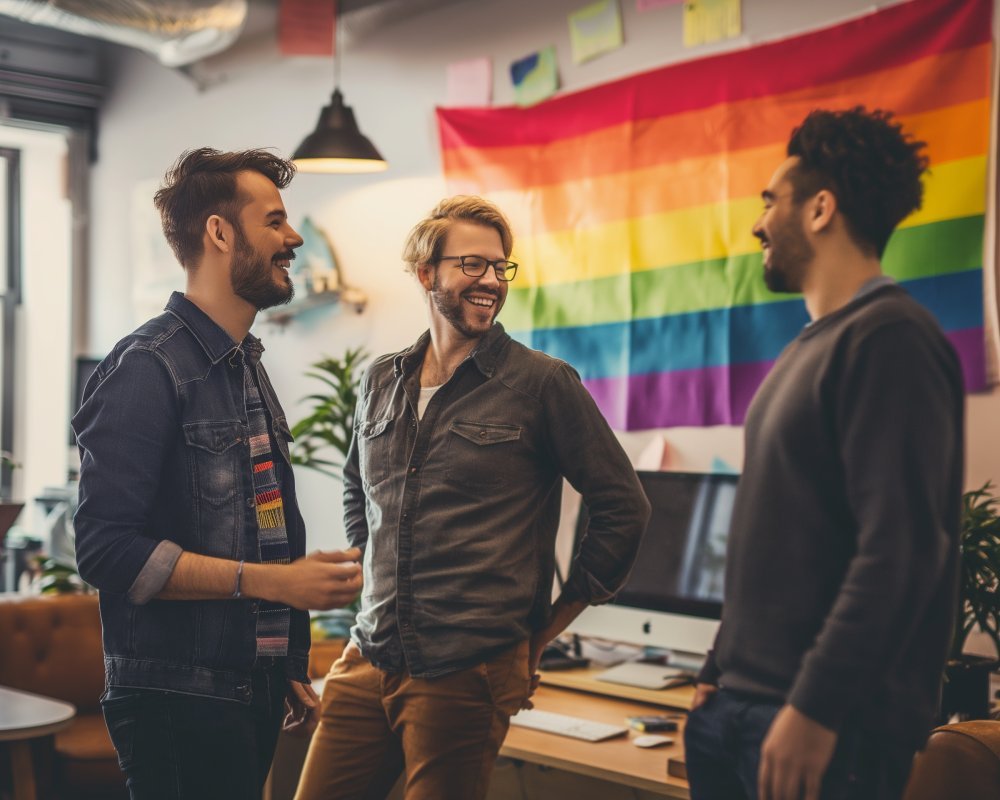
10. Navigating Challenges in Gay Love
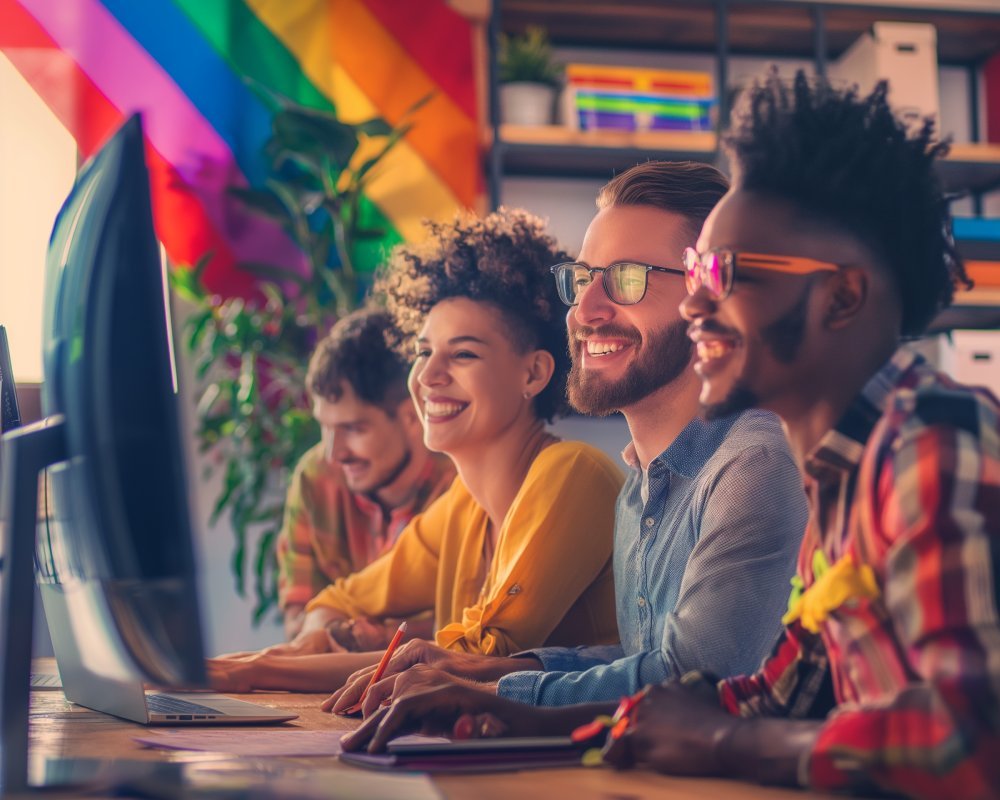
10.1. Legal and Social Barriers
Even in an era of expanding rights, gay couples sometimes face challenges that their heterosexual counterparts do not:
- Legal Uncertainty in Certain Regions: Some places still lack full legal recognition for same-sex unions.
- Discrimination in Employment and Housing: Gay couples, especially those who are openly affectionate, may encounter prejudiced practices.
- Family and Social Rejection: Coming out remains fraught with risk; many gay couples contend with estrangement or hostility from loved ones.
10.2. Coping with External Judgment
External judgment can create pressure on a relationship. Gay couples may need to:
- Develop Strong Communication Channels to address societal pressures before they cause internal conflict.
- Seek Community Support via LGBTQ+ groups, counseling, or mentorship.
- Educate Friends and Family about the realities of gay love and dismantle harmful myths.
10.3. Strategies for Conflict Resolution and Growth
Overcoming challenges in any relationship requires perseverance, empathy, and communication:
- Conflict Resolution Techniques: These include active listening, compromise, and professional counseling when needed.
- Emotional Resilience Building: Partners can benefit from mutual support networks and self-care strategies that counter external negativity.
- Celebrating Milestones: Recognizing each relationship milestone reinforces commitment and builds confidence amid adversity.
11. The Future of Gay Love: Trends and Hopes
11.1. Impact of Marriage Equality and Legal Protections
The legalization of same-sex marriage in many parts of the world has redefined the landscape of gay love:
- Increased Visibility: Legal recognition has boosted media representation and acceptance.
- Improved Relationship Stability: Legal rights and protections contribute to healthier, more secure relationships.
- Ongoing Legal Battles: In some regions, gay couples continue to fight for full equality, which shapes the evolving narrative of love.
11.2. Technology, Dating Apps, and New Modes of Connection
The rise of digital media has transformed how gay love is formed and maintained:
- Dating Apps and Online Communities: Platforms like Grindr, HER, and Scruff have expanded opportunities for connection across geographical borders.
- Social Media Narratives: Instagram, TikTok, and YouTube have become stages for couples to share their authentic stories.
- Hybrid Relationships: Long-distance and digitally supported relationships are increasingly common, challenging traditional notions of physical proximity.
11.3. Shifting Cultural Narratives: Art, Media, and Beyond
As representation improves, cultural narratives around gay love continue to evolve:
- Inclusive Storytelling: New films, television series, and books are giving gay love a multifaceted portrayal.
- Intersectional Approaches: Future representations will increasingly account for race, class, and gender diversity.
- Global Perspectives: Gay love is becoming part of a global dialogue as LGBTQ+ rights move forward in many parts of the world.

11.4. Building a World of Inclusive Love
The future of gay love is not only defined by legal and technological changes—it is also shaped by a cultural commitment to inclusion:
- Educational Initiatives: Inclusive curriculums at schools and universities can foster healthier attitudes.
- Community Engagement: Events like Pride, cultural festivals, and support groups build solidarity and inspire change.
- Advocacy and Policy Reform: Continued political and social activism is essential for eradicating discrimination and supporting every facet of LGBTQ+ love.

12. Conclusion – What Is Gay Love?
12.1. Recap of Key Themes and Insights
In this extensive exploration of What Is Gay Love? we have:
- Defined gay love as a dynamic, evolving phenomenon marked by emotional depth, resilience, and a constant negotiation with societal expectations.
- Explored historical perspectives that reveal how the repression and celebration of gay love have evolved over centuries.
- Compared gay romance with straight romance, illustrating the unique challenges and strengths of same-sex relationships.
- Delved into expressions of love, cultural rituals, and the ways in which relationships differ in the gay community.
- Looked at what gay men should expect in relationships, alongside comparative perspectives on lesbian love, transgender love, and queer love.
- Shared true gay love stories that serve as inspiration and real-life proof that love, in all its forms, is transformative.
- Addressed challenges—from legal obstacles to internalized biases—and proposed strategies for overcoming them.
- Examined future trends that promise an even more inclusive and diverse narrative for gay love.
12.2. A Call to Celebrate and Embrace Authentic Gay Love
As we move into a more inclusive future, it is imperative that society recognizes and celebrates the authenticity of gay love. It is not simply an alternative to straight romance; it is a testament to the human capacity for love against all odds. Embracing gay love means:
- Challenging Myths: Questioning stereotypes and rejecting oversimplified portrayals of gay relationships.
- Supporting Partners: Encouraging open communication, empathy, and trust in relationships.
- Fostering Representation: Ensuring that authentic depictions of gay love appear in media, education, and public discourse.
Every story matters. Whether you relate to a tale of clandestine love forged in the shadows of social repression or a vibrant modern romance celebrated in the light, gay love is a powerful narrative of resistance, creativity, and joy.
12.3. Final Thoughts and Next Steps for Readers
In conclusion, What Is Gay Love? is a multifaceted question with answers that span centuries, cultures, and personal narratives. It is an invitation to look beyond clichés and stereotypes, to appreciate love in its full complexity, and to support each other in the ongoing struggle for acceptance and equality.
For the LGBTQ+ Community and Allies:
- Educate Yourself and Others: Share these insights and stories with your networks.
- Engage in Conversations: Whether online or offline, challenge misconceptions and support authentic representation of gay love.
- Advocate for Change: Support policies that foster equality in relationships, protect LGBTQ+ families, and enhance social welfare for all.
By embracing the full spectrum of love—including gay, lesbian, transgender, and queer love—we build a future that honors every individual’s journey. Let us celebrate the transformative power of authentic connection and continue to fight for a world where every form of love is recognized, respected, and cherished.
Thank you for joining this in-depth exploration. May your journey in love be enriched by truth, empathy, and the courage to live authentically. Every relationship is a part of the mosaic of our shared humanity—let’s celebrate it together.

More Recommended
Elon Musk, Neo-Nazi Allegations, and the Global Rise of Far-Right Politics
Elon Musk, Neo-Nazi Allegations, and the Global Rise of Far-Right Politics How Rumors, Reports, and [...]
How to Plan a Lesbian Wedding
How to Plan a Lesbian Wedding: A Complete Guide Planning a wedding is an exciting, [...]
Pride in Advertising: How Gay-Owned Companies Are Embracing Inclusivity in Marketing
Gay-owned companies are leading the charge in embracing diversity and inclusivity in their marketing strategies. [...]
Travel Insurance 101 for Lesbian Cruises
Travel Insurance 101 for Lesbian Cruises – Traveling on a lesbian cruise can be a [...]
Targeting Love: How Retail Giant is Celebrating Diversity with Lesbian-Focused Campaigns
Celebrating Diversity with Lesbian-Focused Campaigns As society becomes more inclusive and accepting of diversity, it [...]
What is Gay Pride?
A Comprehensive Guide to the History, Significance, and Celebrations – What Is Gay Pride? What [...]
Queering the Campaign: How LGBTQ+ Advertising is Redefining Gender Norms
Introduction Queering the Campaign: How LGBTQ+ Advertising is Redefining Gender Norms is a topic that [...]
Breaking down the Myths: How Target Marketing to the Gay Community is Shaping the Future of Advertising
Breaking down the Myths: How Target Marketing to the Gay Community is Shaping the Future [...]
Can Gays Serve in the Military | USA?
Can Gays Serve in the Military | USA? – The question of whether gays can [...]